By MaríaEmilia Morazán
At Idea2Form, we collaborate with social impact organizations who are working to make change in our communities and society. Most of these organizations are operating with tight budgets meaning there is little-to-no funding for strategic communication efforts. When we discuss this trend with nonprofit leaders we are asked, “how can we justify prioritizing marketing services when we do not have money to fund our existing programming?”.
Prior to my work at Idea2Form, I worked as a Digital Organizer. Digital Organizers are community organizers — we use digital tools to build power and create change. One of the most important tenets of community organizing (offline and on) is to meet people where they are at both physically and ideologically. So when I consider the question nonprofit leaders (and some funders) ask us, I immediately think about how effective marketing connects mission driven organizations with their audience — meeting them ideologically, physically — and galvanizing them to take action.
Think about how much time you spend online, how much you learn about important news, opinions, and find opportunities. Small social impact organizations similarly need to meet people where they are at: online.
There are 3 phases of digital organizing that can be applied to the social change work that many of Idea2Form’s clients are doing (and who individual and institutional funders are considering supporting).
1. Building Communities
During this phase, organizations are spending time building trusting relationships with people online. How does that happen? There are a few ways.
-
- Branding — a well designed brand communicates the attitude and values of an organization quickly. It also makes the organization easily recognizable online helping cut through other content.
- Effective Communications Strategy — A solid communications plan includes the spaces online where your audience (whether that be donors, volunteers, or program participants) can be found. It offers compelling messaging suggestions that will resonate and build relationships with your audience. It includes insights and analytics that give us information about our audience — what is resonating with them, how long are they spending thinking about a particular issue, among other information.
2. Engaging Communities
During this phase, social change organizations begin to engage the community they have built online. This looks like replying to comments, tagging partners, posting relevant and timely content that encourages conversation online about the issues these organizations are advocating for.
-
- Video — Storytelling is an important way to communicate the relevance of an organization’s work. Today, videos dominate people’s attention online. A 30 second video can quickly communicate complex ideas like the root causes of a problem, a Theory of Change, or an organization’s history.
3. Activating Communities to Take Offline Action
Once an organization has built trust with a community online and has begun authentically engaging with that community, it’s time for action. Activating your audience or community looks like:
-
- An effective website — an effective communications strategy will lead an organization’s audience to their website, which includes specific calls to action such as making a donation, signing up for volunteer shift, subscribing to a newsletter, or attending an event.
We understand the temptation of dismissing funding for an organization’s marketing services as nice-to-have, rather than a must-have. It takes a lot of strategy work, dedication, time, and resources. And yet, so often we see organizations struggle to achieve sustainability or advance their mission because they lack effective strategies and the capacity to implement and maintain them. Funding marketing (and other design initiatives) amplify the mission of an organization and save financially strapped organizations time and money by communicating with, connecting to, and inciting key audiences to take action.
Idea2Form partners with nonprofits to make their bold causes easy to connect with and impossible to ignore. Visit our website to learn more about how we can partner to help your organization accelerate its impact.






